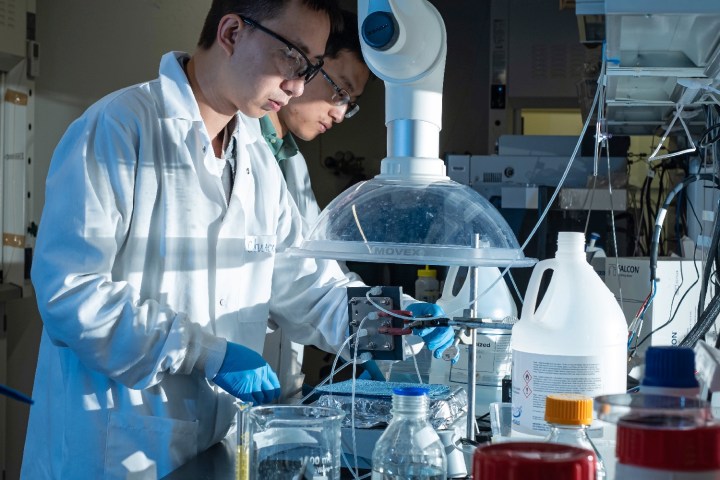
There are plenty of ideas for ways to reduce the amount of greenhouse gases in our environment — from lab-grown minerals which suck carbon dioxide out of the air to a Caltech reactor that transforms CO2 into molecular oxygen. Now researchers from Rice University have added their own contribution: a new electrocatalysis reactor that’s able to recycle carbon dioxide into liquid fuel in the form of purified concentrations of formic acid. In doing so, it provides a proof-of-concept for how greenhouse gases could be turned into new fuel sources in a cost-effective and energy-efficient manner.
“Electrocatalytic CO2 reduction reaction (CO2RR) to form valuable liquid fuels using renewable energy is a potential strategy to achieve a carbon-neutral energy cycle,” Dr. Chuan Xia, a researcher who worked on the project, told Digital Trends.
The current method for producing formic acid is expensive and requires a lot of energy. The new Rice University approach uses a two-dimensional bismuth catalyst and a solid-state electrolyte which eliminates the need for salt as part of the reaction. Salt, in the form of sodium chloride or potassium bicarbonate, is usually required to allow ions to move freely in water as part of the conversion process. However, bismuth is a very heavy atom, with low mobility, and that has the effect of stabilizing the catalyst.
The Rice lab was able to generate formic acid continuously for 100 hours with little noticeable degradation to the components of the reactor. This suggests it would be possible to scale up the process to make it more useful for industrial purposes.
“Next, we will focus on the production of pure C2+ liquid fuels — ethanol and propanol — which is much more energy-dense and valuable than C1 fuels, [such as] formic acid, via catalyst design and CO2RR system optimization,” Xia said.
While there’s still more work to be done, the hope is that carbon dioxide reduction initiatives such as this could play a big role in both battling climate change and in green chemical synthesis. If a loop which turns carbon dioxide back into fuel can be established, it will stop ever-increasing amounts of CO2 from being emitted.
A paper describing the work, titled “Continuous production of pure liquid fuel solutions via electrocatalytic CO2 reduction using solid-electrolyte devices,” was recently published in the journal Nature Energy.
Editors' Recommendations
- Liquid windows can turn opaque in the heat and save energy
- Bitcoin has a massive carbon footprint. This clever new cryptocurrency doesn’t
- Startup has created technology for turning greenhouse gas emissions into soap


